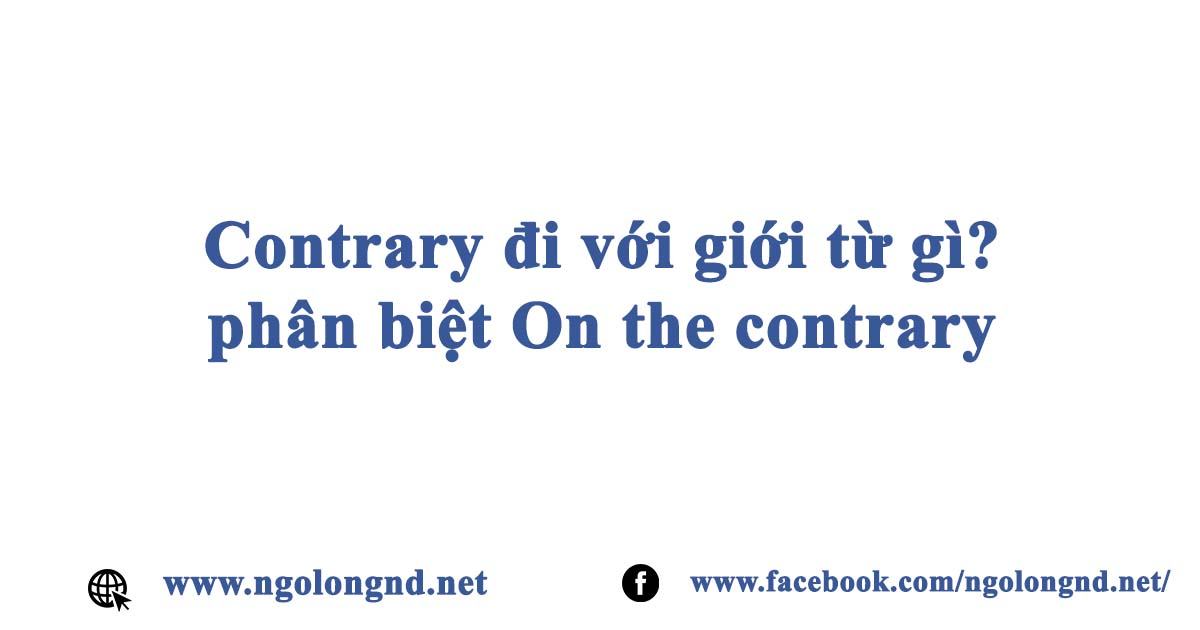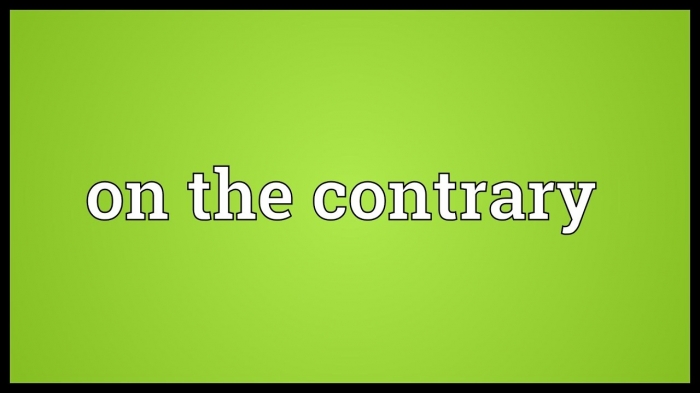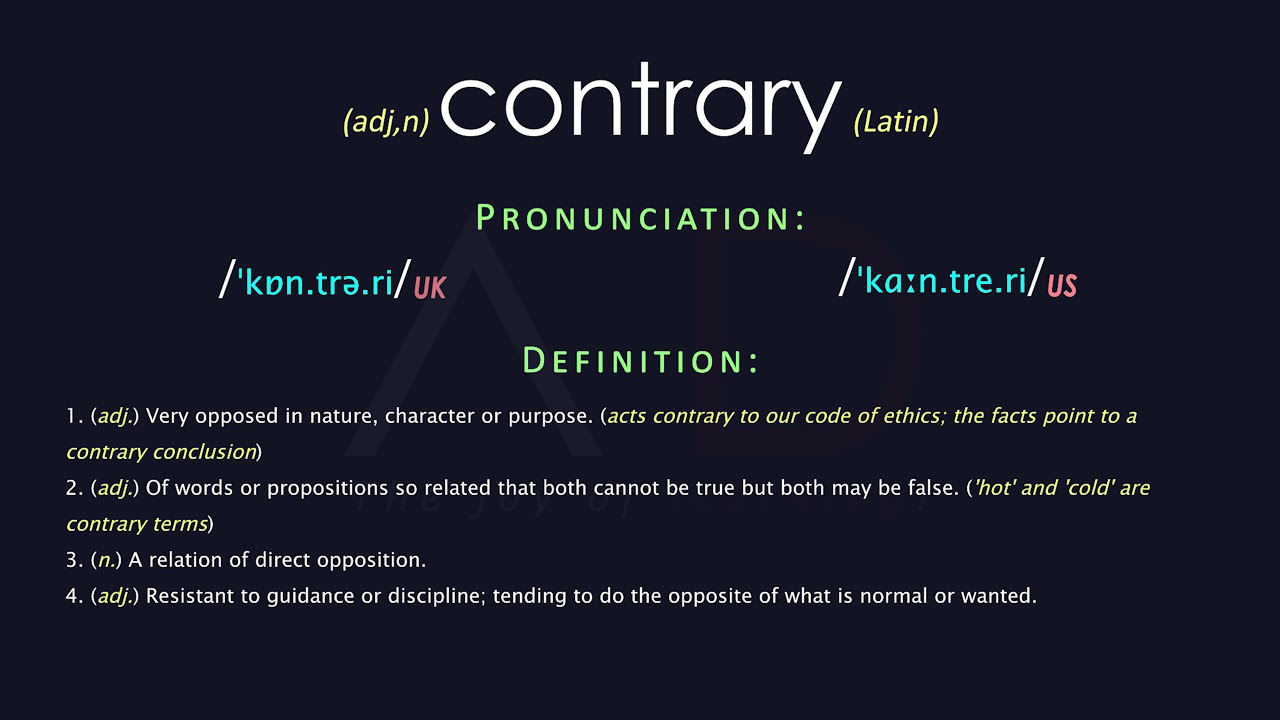Contrary đi với giới từ gì? phân biệt On the contrary. Contrary đi với giới từ on và to là phổ biến gồm chủ yếu 2 cụm: on the contrary to the contrary

Nội dung chính:
Contrary đi với giới từ gì?
Contrary đi với giới từ on và to là phổ biến gồm chủ yếu 2 cụm: on the contrary to the contrary
Phân biệt On the contrary
Nhiều bạn có thói quen sử dụng “On the contrary” với ý nghĩa “trái lại” thay cho “by/in contrast”. Tuy nhiên, trên thực tế, 2 cụm từ này có ý nghĩa khác nhau 🙂
1. By/In contrast: có nghĩa là giống “On the other hand”, được đặt đầu câu ý chỉ một ý so sánh hay tương phản với nội dung đã nói trong câu trước đó.
e.g. Unemployment rose in the UK. By contrast, the number of unemployed people in Canada fell.
2. On the contrary: có nghĩa phủ định đi điều đã được đề cập trước đó, ý nói câu trước là “không đúng, không phải như vậy”.
e.g. – Person 1: “You had some problems with your hotel, didn’t you?”
– Person 2: “On the contrary, the hotel was great, but the airline lost my suitcase.”
Do vậy trong Writing, các bạn không nên dùng “On the contrary”, chỉ dùng “By/In contrast” thôi nhé ^o^


Xem thêm : Serious đi với giới từ gì
The meaning (of “to the contrary” and “on the contrary”) you have provided should be sufficient to understand the difference.
- You use “on the contrary” when you want to make a denial or contradiction more emphatic. You use it to show that you disagree with something; the statement that follows this phrase has the meaning opposite to something.
- You use “to the contrary” when you want to imply the opposite of something (without a denial). You never use it to show that you disagree with something; the statement that follows this phrase has the meaning opposite to something.
In the second statement you have provided, you are denying/contradicting that the spirit of Senator Simmons’s article is humane or broad; rather it is narrow and harsh. So, since you are denying something, you have to use on the contrary.
In the first statement you have provided, you are not denying/contradicting that in the old days you had to provide parking; rather you are simply saying that now, it is the opposite of it. Since you are not denying something, you have to use to the contrary.










